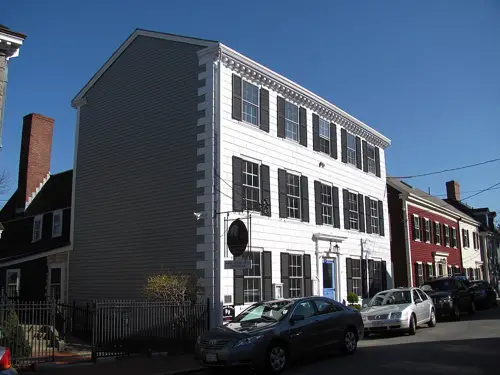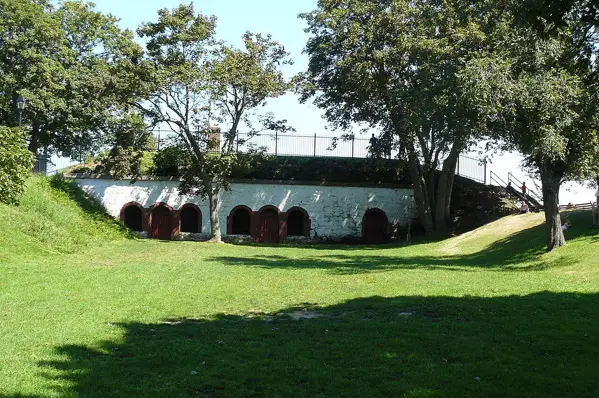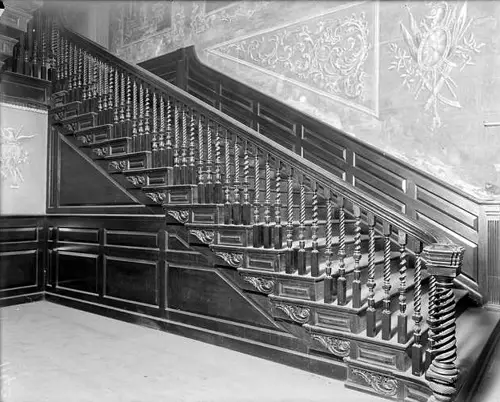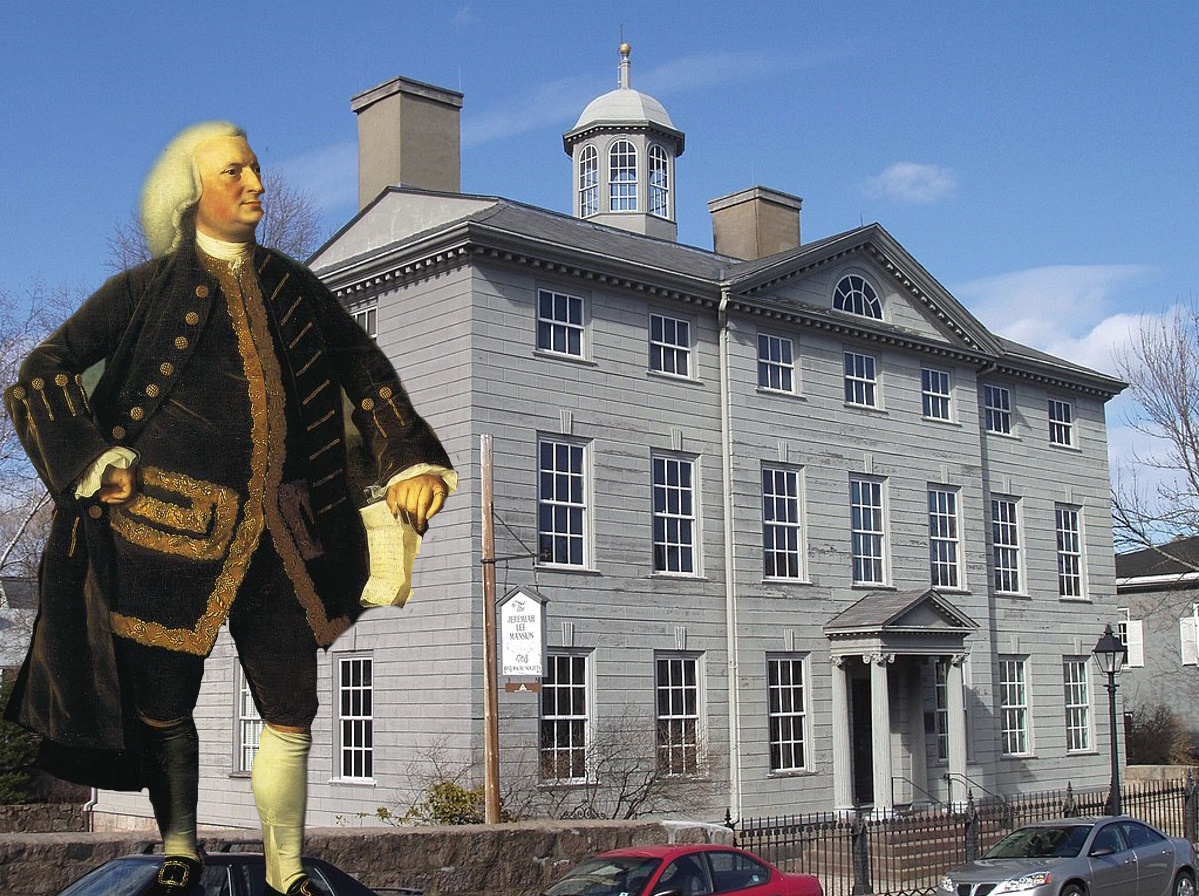When Jeremiah Lee lost his fortune in the American Revolution, he left behind a magnificent Georgian mansion in Marblehead, Mass., that remained little changed for centuries.

Jeremiah Lee by John Singleton Copley
Jeremiah Lee was one of the great lost leaders of the American Revolution. On the night of April 18, 1775, he was meeting with fellow Marbleheader Elbridge Gerry, Sam Adams and John Hancock in Lexington, Mass. When Paul Revere warned that the red coats were coming to arrest them, they hid in a field. Lee caught pneumonia and died soon afterward.
Lee had accumulated an enormous fortune as a shipping merchant. He owned a warehouse and wharf, a fleet of trading ships and fishing vessels. He employed a great many sailors and tradesmen. In 1768 he built the 16-room trophy house in Marblehead that stands today.
Lee knew that British rule would soon ruin him and his fellow Marblehead merchants. So, he became a representative to the rebel Congress and began preparing for war. He imported cannons, powder and shot from Europe. He also established connections in Maryland and Virginia to procure supplies for war. Lee raised a regiment of mariners and fishermen, and he would have led it had he lived. Now known to us as Glover’s Regiment, it ferried Washington across the Delaware on that fateful Christmas Eve.
The Jeremiah Lee Mansion
It took two years to build the mansion, from 1766 to 1768. Lee spared no expense in appointing his showplace. He had mahogany wainscotting imported from Santa Domingo, ordered wallpaper from England and hired talented local craftsmen to carve the woodwork.
In the Great Hall, the ornately carved wooden mantle over the fireplace formed the focal point of the room. The Lees entertained dignitaries including the Marquis de Lafayette and George Washington in the Great Hall.

Martha Lee by John Singleton Copley
Lee worked from home in his counting room, where he met with his ship captains and other employees. His double-door safe is still in the chimney.
The house fell out of the Lee family’s hands when the fortune dwindled away, and in 1909 the Marblehead Museum (now the Marblehead Museum and Historical Society) took ownership.
The U.S. government designated the Jeremiah Lee Mansion as a National Historic Landmark in 1960 as one of the finest Late Georgian houses in the United States. It has changed little since Jeremiah Lee lived in it (no restrooms, for example).
King Hooper Mansion
Roughly 50 yards away from Lee’s mansion is the King Hooper mansion, named for Robert “King” Hooper, son of a candle maker who had built himself a fortune in shipping. Hooper and Jeremiah Lee were brothers-in-law. Unlike Lee, however, Hooper thought his best hope for preserving his fortune lay in befriending British officials during the Revolution. It’s unclear how deeply their political differences affected their personal lives.
Hooper, too, lost his fortune in the war.

The Marblehead Arts Association owns the Hooper Mansion, which you can visit year-round from 12-5, Wednesday through Sunday.
Marblehead
You’ll want to stroll around Marblehead’s dense waterfront historic district and look for signs of its Revolutionary past. You might look up and see a plaque on a house telling you it’s Founding Father Elbridge Gerry’s birthplace.
Old Fort Sewall offers a stunning view of Marblehead’s harbor, now a public park with underground, bomb-proof quarters.

Fort Sewall
Stop by Abbot Hall, where you’ll get a good sense of Marblehead’s Revolutionary history, with exhibits, busts and paintings, including The Spirit of ’76. Abbot Hall, part museum and part municipal office, is open during the week.

Marblehead Harbor
Stop in a local bakery to pick up a Joe Frogger, rum-and-molasses cookies named for Joseph Brown. He won his freedom from slavery by fighting in the Revolution. Afterward he ran a tavern by a frog pond and served the cookies made by his wife, Lucretia.
If you’re ready for lunch and you want to mingle with the locals in a no-frills (and we mean no-frills) atmosphere, check out the Driftwood. (No dinner and no credit cards). 63 Front St. The Barnacle serves lunch and dinner at 141 Front St. If you’re in town during a winter storm, there’s no better vantage point to take it in than the Barnacle.
Five Things You’ll Remember About the Jeremiah Lee Mansion

The old Lee Mansion, sometime before 1906
The Grand Staircase
Once you enter the large entryway, you can’t help but notice the grand staircase. Local craftsmen carved the ornate balusters in different patterns.

The Lee mansion staircase.
Trompe L’Oeil
From the outside, the house looks like it was made of stone, but it isn’t. Lee had workmen pain the wooden exterior to look like marble, a feature of the so-called Georgian Gothic style of architecture.
Furnishings and Art
The Lee Mansion has a fine collection of early American furniture, though only a few pieces are original to the house. It includes pieces by cabinetmakers from Boston, Salem and Marblehead. The yellow silk damask furniture in the guest bedroom is especially stunning. The great John Singleton Copley painted two portraits that hang in the Lee Mansion – one of Jeremiah, one of his wife Martha.

Third-floor furnishings
Wallpaper
The exquisite, hand-painted wallpaper is original to the house. It’s still intact, a testament to the durability of paper.
The Garden
Since 1936, the Marblehead Garden Club has maintained the Lee Mansion Gardens. The plants and designs are inspired by history. Visitors can walk, picnic or rest on the benches.
If you visit the Lee Mansion…
Since the Lee Mansion Hasn’t changed much since Revolutionary times, it’s not accessible for people with mobility issues. The garden, however, is partially accessible.
The mansion, at 161 Washington St., is open for guided tours from June 1 to October 31 at 10 am. Tours run every hour on the hour, Wednesday through Saturday.
Website: www.marbleheadmuseum.org/properties/lee-mansion/
* * *
Learn more about Marblehead’s Revolutionary history in this complete guide to Revolutionary War sites in New England. Brought to you by the New England Historical Society. Click here to order your copy in paperback, here to order an ebook.
Images: Lee Mansion exterior By Daderot at English Wikipedia, CC BY-SA 3.0, https://commons.wikimedia.org/w/index.php?curid=17977334. Hooper mansion By John Phelan – Own work, CC BY 3.0, https://commons.wikimedia.org/w/index.php?curid=9928890. Fort Sewall By Zandcee – Own work, CC BY-SA 3.0, https://commons.wikimedia.org/w/index.php?curid=11376896. Marblehead Harbor By massmatt – https://www.flickr.com/photos/momentsnotice/50299834536/, CC BY 2.0, https://commons.wikimedia.org/w/index.php?curid=123587128.


